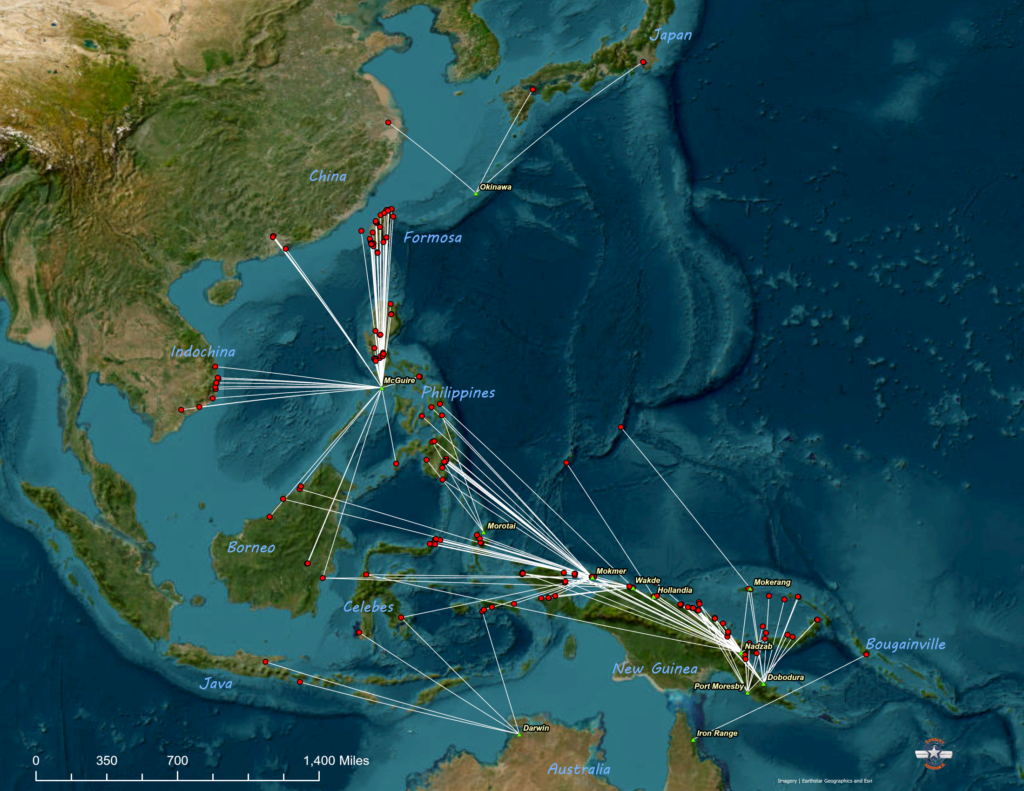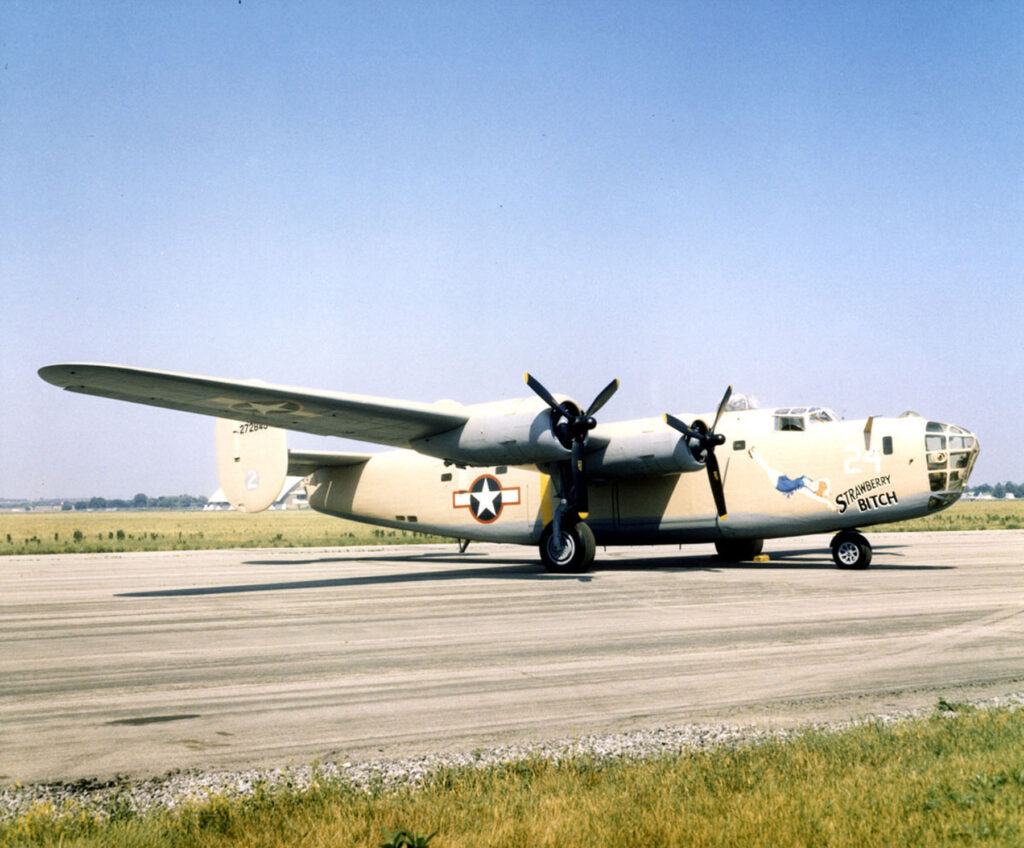The 90th Bombardment Group (Heavy) flew the B-24 Liberator bomber in the Pacific during WW2.
Activated in April 1942, by November the same year they had arrived in Queensland, Australia and were assigned to 5th Bomber Command, 5th Air Force. The four squadrons were initially based at Iron Range field, near Lockhart River, in far northern Queensland, but the 319th Bomb Squadron was then assigned temporarily to Fenton Field in the Darwin area to operate as an armed recconaisance force.
Most of their early missions were staged out of the Port Moresby airfields, with the squadrons cycling between Iron Range and Port Moresby every week. During that same time, the Darwin-based squadron was flying missions to Java, Celebes, and Timor.
In the Group’s Unit History (AFHRA microfilm B0171), very little information is given about the mission targets during 1942 and 1943. By January 1944, the critical shortages of aviators, airplanes, and supplies had been overcome and the unit had an officer assigned to record the unit history which was then submitted each month to higher headquarters. The mission data was generally much more consistent and thorough after that point.

From Port Moresby, the 90th moved forward as the war progressed. Their first move was to Dobodura in northeastern New Guinea, then they moved to airfields at Nadzab, Wakde, Biak, and Mindoro before ending the war on Ie Shima.
The unit history records 395 missions flown by the group, with the vast majority of them occuring between January 1944 and August 1945.

This map does not attempt to display every mission flown by the 90th Bomb Group during WW2, but rather, is intended to show areas targeted, most of them on multiple occasions. A map series of missions flown from individual airfields could follow in successive posts that would provide larger scale labeled maps to identify many of the locations by WW2 era names.
